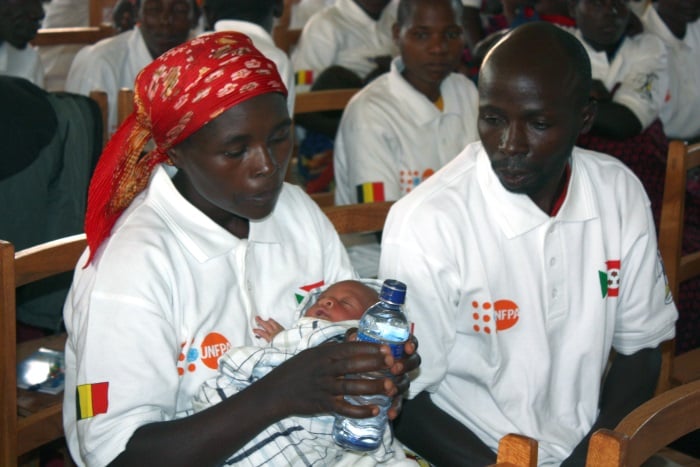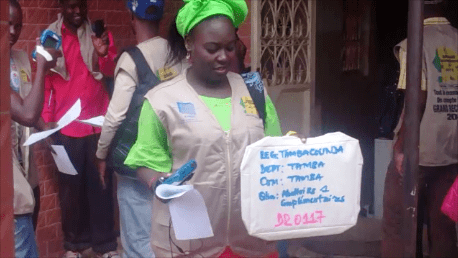Senegal has 12,873,601 inhabitants in 2013. For the first time in the history of census in Senegal, preliminary data are available in a record time of three months. This speed in data processing was made possible through the use of Personal Digital Assistant (PDA) obtained from Brazil, with the support of UNFPA, the United Nations Fund for Population.
Facilitated by UNFPA, the South-South cooperation between the National Agency of Statistics and Demography (ANSD) and its counterpart in Brazil has enabled Senegal to be lent 20,200 PDA and save US$10 million to hold its 4th General Population, Housing, Agriculture and Livestock Census (RGPHAE). The cost of the census is valued at more than US$29 million (over 13.8 billion CFA francs).
The ANSD published the preliminary results on 28th March 2014 after processing the data collected during the enumeration phase which took place from 20th November to 10th December 2013. The main findings reveal key issues.
Population growth remains stable
Senegal has 12,873,601 inhabitants in 2013 against 9,858,482 in 2002, a population growth of 2.5% per year. It is noted that the inter-census growth rate has remained stable since it was 2.5% between the second census in 1988 and 3rd one in 2002.
The age and sex structure reveals a population with slightly more women (50.1%) than men (49.9 %).
A predominantly young population

Half the population is under the age of 18 years (17 years for boys against 19 years for girls). In addition, people aged under 20 years represent 52.7 %. Some 42.1 % of the total population are under 15 years. In addition, 3.5% of the population are aged 65 and above.
This means that the demographic dependency ratio is high i.e. 84 inactive people (under 15 years and 65 years and above) per 100 active people (15-64 years).
The voting population, those aged 18 years or above, is 51.4 %. There are more women (53.0 %) than men (49.7 %) voters.
High population concentration in the capital
The population distribution in the country shows very significant inequalities. It is concentrated in the west of the country (Dakar and Thies) and centre (Diourbel and Kaolack), while the east (Tambacounda and Kédougou) and north (Matam) are sparsely populated. The density of the population increased from 50 inhabitants per square kilometer in 2002 to 65 inhabitants in 2013.
The region of Dakar is by far the most populated place with 2,956,023 inhabitants; the density is 5,404 inhabitants per square kilometer. Nearly a quarter of the total population (23%) resides in Dakar on an area representing only 0.3 % of the national territory. However, the region of Tambacounda, the largest in the country with 21.5 % of the land area, is home to only 5.0% of the population, with a density of 15 inhabitants per square kilometer.
A more rural than urban population
Senegal's population in 2013 is more rural (55%) than urban (45%) but with disparities in regions. With an urbanization rate of 96 %, Dakar region has almost half of the urban population (49%). It is distantly followed by Thies region with 49% urbanization rate, representing 14% of the urban population. Three regions, Diourbel, Fatick and Kaffrine, are less urbanized with a rate of 16 % each.
The breakdown by category of households indicates that 49.5% of households are agricultural and 50.5% nonagricultural. These agricultural households are mainly engaged in rain-fed farming (60.7%) and livestock (60.1 %).
Box: Senegal managed a paperless census with support from UNFPA
Meeting the technological challenge was Senegal’s ambitious bet. By opting for handhelds in the fourth General Population, Housing, Agriculture and Livestock Census (RGPHAE), Senegal has a made a huge leap into the digital age.
This feat was achieved through the South-South Cooperation with Brazil and Cape Verde. Indeed, handhelds were available thanks to a successful partnership between on the one hand, the National Agency of Statistics and Demography (ANSD) and the Brazilian Institute of Geography and Cartography (IBGE) and on the other hand between ANSD and the National Institute of Statistics of Cape Verde.
This cooperation was facilitated by UNFPA offices in Senegal and Brazil that have accompanied the negotiation, preparation and delivery process of 20,200 handheld computers (PDAs) in Senegal and provided all technical and financial assistance as well. This experience inspired Côte d'Ivoire which in turn received the handhelds used by Senegal for its own census.
In addition to funding the ferrying of handheld computers and their insurance, UNFPA Senegal availed the ANSD with a national expert to strengthen their capacity throughout the RGPHAE process.
Through meetings at the national and international level, many ANSD executives received funding from UNFPA to improve their capacity in data collection, census data processing and analysis. Logistics, nine (9) pickup vehicles and forty (40) computers were acquired by UNFPA to support ANSD in the data collecting and analyzing phases.


